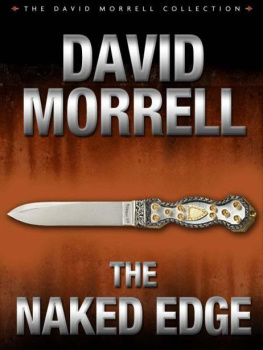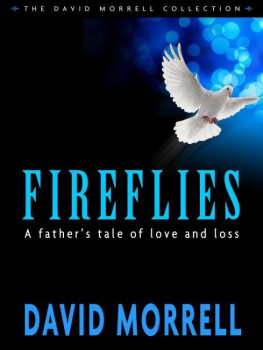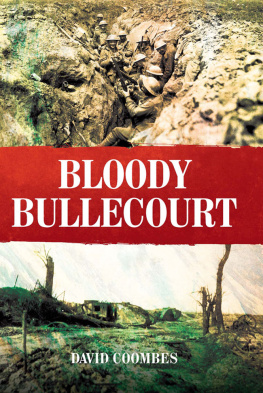David Morrell - The Covenant Of The Flame
Here you can read online David Morrell - The Covenant Of The Flame full text of the book (entire story) in english for free. Download pdf and epub, get meaning, cover and reviews about this ebook. genre: Detective and thriller. Description of the work, (preface) as well as reviews are available. Best literature library LitArk.com created for fans of good reading and offers a wide selection of genres:
Romance novel
Science fiction
Adventure
Detective
Science
History
Home and family
Prose
Art
Politics
Computer
Non-fiction
Religion
Business
Children
Humor
Choose a favorite category and find really read worthwhile books. Enjoy immersion in the world of imagination, feel the emotions of the characters or learn something new for yourself, make an fascinating discovery.

- Book:The Covenant Of The Flame
- Author:
- Genre:
- Rating:3 / 5
- Favourites:Add to favourites
- Your mark:
- 60
- 1
- 2
- 3
- 4
- 5
The Covenant Of The Flame: summary, description and annotation
We offer to read an annotation, description, summary or preface (depends on what the author of the book "The Covenant Of The Flame" wrote himself). If you haven't found the necessary information about the book — write in the comments, we will try to find it.
The Covenant Of The Flame — read online for free the complete book (whole text) full work
Below is the text of the book, divided by pages. System saving the place of the last page read, allows you to conveniently read the book "The Covenant Of The Flame" online for free, without having to search again every time where you left off. Put a bookmark, and you can go to the page where you finished reading at any time.
Font size:
Interval:
Bookmark:

David Morrell
The Covenant Of The Flame
To Barbara and Richard Montross in memory of Matthew,
Saturday nights, and a castle in Spain.
If a man abide not in Me, he is cast forth as a branch and is withered.
And men gather them and cast them into the fire.
And they are burned.
The Gospel according to John
PROLOGUE: A FURY SLINGING FLAME
Spain, 1391.
Archdeacon Ferran Martinez, driven to excess by his fervent Catholicism, preached increasingly inflammatory sermons against all heretics. On 15 March, Ash Wednesday, his charismatic hate-filled oratory aroused his parishioners to such a frenzy that they stormed from his church toward the Jewish quarter of Seville. If not for the orderly minded civil authorities, a massacre might have ensued. Instead two leaders of the mob were seized and scourged. But their punishment, far from being a discouragement to fellow bigots, made the leaders martyrs and fueled the fires of their followers' hate. Anti-heretical fury spread from Seville to neighboring cities and finally throughout Spain with the terrible consequence that during the summer of 1391 an estimated 10,000 disbelievers were executed, most by beatings and stonings.
Several, though, were put to the torch.
GUARDIANS OF THE FAITHFrance.
The religious mania in Spain was not unique. Since the start of the Middle Ages, a heresy derived from ancient Mideastern theology had attracted so many followers that the Church felt threatened. The heresy, known as Albigensianism, maintained that good and evil were balanced forces, that two Gods not one -controlled the universe, that Satan was equal to, in combat with, and as cunning as the Lord. The body flesh was Satan's domain. The mind the spirit - was the path to salvation.
The thought of two Gods horrified the Church. Christ, the physical incarnation of the Blessed Father, could not have been evil. A version of God in the flesh, He could not have been part of the Devil's work when, crucified, He sacrificed Himself to redeem His decadent children. The heresy had to be crushed.
The resultant crusade against the Albigensians was merciless. Tens of thousands died. But the heresy persisted. Thousands more died until at last in 1244 at the mountain fortress of Montsgur in the Pyrenees of southwestern France, the last stronghold of the Albigensians was surrounded, assaulted, and set on fire.
But there were rumors that the heresy despite the crusade's brutality had not been eradicated, that a small group of heretics had used ropes to descend from the mountain the night before the massacre, taking with them a mysterious treasure, and that this core of heretics had impossibly survived to disperse, to burrow deeply, their repulsive errors festering.
THE PLACE OF BURNINGSpain, 1478.
The massacres at Seville and Montsgur were but two examples of religious hysteria in the Middle Ages. Jews, Moors, Albigen-sians, and Protestants became the common target of a papally authorized purification of the Faith, its official title the Inquisition. The northern countries of Europe rejected the Inquisition's influence. But Italy, England, and France committed atrocities in its name.
Nowhere else, however, was religious intolerance as extreme as in Spain. There the Inquisition, initially conducted by the sunken-eyed Dominican priest Tomas de Torquemada, resulted in tens of thousands of tortures and executions. The intent was to educate heretics and to guide them toward the true belief.
Victims had their hands tied behind their back, from which a rope was raised, the pressure on their shoulders excruciating.
'Confess!' they were ordered.
'Confess? the victims moaned.
'Your heresy!'
'Heresy?' the victims wailed.
'Raise the rope!' the Inquisitors commanded.
Arms were strained. Shoulders popped.
If the victims survived, they were stretched on the rack, and if they still survived but persisted in denying their theological error, the Inquisitors thrust a tube of cloth down their throat. Water was poured. When the victims came near to drowning, the tube forcibly extracted brought with it not only water but blood.
These victims had lost both their property and the right to question their accusers. Helpless, they had only two choices: to confess and beg for mercy but, more important, to implicate fellow heretics; or else to insist that they were innocent, that jealous neighbors had lied when informing against them. To confess, even if the victim was not a heretic, brought the chance for freedom. To insist that there'd been a mistake, to refuse to implicate others, caused the harshest penalty.
At the quemadero, the place of burning, the accused were dragged from prison for their auto-da-f or act of faith. All wore yellow robes and peaked caps. Those who'd been sentenced to death had black flames pointing downward on their garment. The others could still not be sure that they would survive. Only when they climbed to the scaffold would they be certain of the Inquisitors' judgment. Some, a few, were set free. Their confessions had been believed, although penance would have to be suffered. Others were sentenced to prison, a reprieve of a lingering death.
Still others were strangled.
But the worst offenders were burned alive at the stake. Their ashes were scattered, along with those of suspected heretics who'd died before the Inquisitors could question them. Even after death, those suspected heretics were not immune, their bodies exhumed and purified by flames.
This zealous protection of the Faith persisted for a longer period of time than is generally realized. For centuries, from the close of the Middle Ages into the Renaissance and then to the so-called Age of Enlightenment, the Inquisition enforced its beliefs. Only in 1834 was the institution finally disbanded.
Officially, at any rate. But there were rumors.
ONE: CAUSES AND CONSEQUENCES THE LORD IS MY WITNESS
ONE
SENATE CLEAN-AIR BATTLE LOOMS WASHINGTON, DC, 10 June (AP) In this year's most tense confrontation between Democrats and Republicans, the Senate today begins its debate on the controversial Barker-Hudson clean-air bill, which advocates that the nation not only adopt but exceed the stringent atmosphere-control policies recently adopted in California.
'Our air's as foul as the smoke from a field of burning tires,' Senator Barker (Dem, New York) announced in a smoggy press conference on the steps of the Capitol Building yesterday. 'Take a deep breath. That is, if you're brave enough. Try not to gag. We ought to be wearing gas masks.'
'And stay indoors,' the bill's co-sponsor, Senator Hudson (Dem, New Hampshire), added. 'My wife and I went out for a stroll last night. Five minutes was all we could bear. We rushed back home and made sure all the windows were closed. Igave up smoking a dozen years ago. Might as well not have bothered. According to my statistics, the atmosphere's so filthy we inhale the equivalent of two packs of cigarettes every day. If you don't care about yourselves, then at least protect your children. We've got to stop destroying their and your lungs.'
The Barker-Hudson bill advocates a complete ban on smoking in all public places, an exorbitant fine for car and truck manufacturers if they fail to reduce emissions within two years, an equally exorbitant fine for industries that fail to reduce
atmospheric pollution within the same length of time, a surcharge on automobile license fees for owners of more than one vehicle, a mandatory air-exhaust filtration system outside restaurants, dry-cleaners, and
Next pageFont size:
Interval:
Bookmark:
Similar books «The Covenant Of The Flame»
Look at similar books to The Covenant Of The Flame. We have selected literature similar in name and meaning in the hope of providing readers with more options to find new, interesting, not yet read works.
Discussion, reviews of the book The Covenant Of The Flame and just readers' own opinions. Leave your comments, write what you think about the work, its meaning or the main characters. Specify what exactly you liked and what you didn't like, and why you think so.






